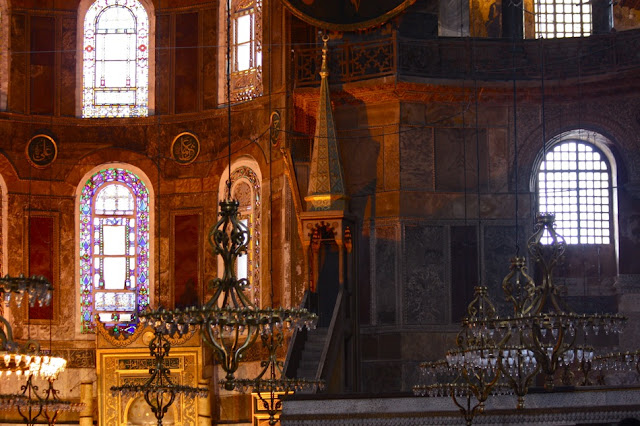
#1. Carry a map
Use a map, iPad, iPhone, or paper map to orient yourself. Istanbul has many curved and narrow streets. The streets may bend to the right or slope to the left. The city is not built on a grid like Chicago or New York where you can just give straightforward directions such as "Walk two blocks and the restaurant is there".

#2. Explore the side streets
Once you have familiarized yourself with the area, it's time to put away the map. Explore. Wander around. The side streets of Istanbul are very worth exploring. You will experience the everyday walks of local life along the steep and cobblestone streets. Veer off to a side street that you did not walk on the day before and you will find that it eventually leads you to a familiar landmark.

#3. Where to stay
The most frequently asked question is "Should I stay in Sultanahmet or Taksim Square"? Stay in between. Sultanahmet is where the historical attractions are. You will be visiting the attractions during the day but do you really need to stay right by the Hagia Sophia or Blue Mosque? Sultanahmet puts you closer to the historical attractions and that also means the area is extremely touristy; many restaurants there cater to tourists. Taksim Square is in the Beyoğlu district where the main dining and nightlife area at. Beyoğlu is where the Istanbullus go play and dine. Taksim Square, however, is at the northern end of the Beyoğlu district. Staying closer to the southern end of Beyoğlu (near the Tunel station or the Galata Tower) puts you right in between and gives you the best of worlds. In the evening, relax and dine among the locals in Beyoğlu.

#4. Plan to carry enough cash
We usually use our credit cards when traveling, but in Istanbul, don't be overly conservative when planning on how much cash to bring with you. Though many restaurants accept credit cards, tipping is done with cash only. You can't add the tip onto the amount of your meal to be charged to the credit card. You don't need to tip as much as you would in the U.S., but it will surely add up especially when eating out at every meal.

#5. WC
You will rarely need to hold your bladder in Istanbul. Every mosque has women and men toilets. Since there is a mosque almost everywhere you go, public restrooms are easily available. Keep a small stash of coins with you for entry into the toilets.

#6. Istanbulkart
The transit card can be used on trams, buses, and ferries. Istanbulkarts can be purchased from stations and also newspaper vendors. A deposit of 10TL is required for each Istanbulkart. You choose how much credit you would like to load onto your card. Keep the receipt from your Istanbulkart purchase. At the end of your trip, return the Istanbulkart together with the receipt to get back the deposit. One Istanbulkart can be used for multiple persons.

#7. Turkish words
While many Turkish people can speak English, a good lot of them also do not. Learning some useful Turkish words or phrases will help you go a long way. Knowing how to say some of the food items in their Turkish names will come in handy. Sure, you can gesture how many of this and that you'd like to have but there's only so much you can gesture. Knowing how to order Turkish coffee the way you like it with the right Turkish words will also prove very useful. In Turkey, you order the Turkish coffee according to the level of sweetness i.e. sade [sah-dey] for plain, az şekerli [ahz sheh-kehr-lee] for little sugar, orta şekerli [or-tah sheh-kehr-lee] for medium sugar, çok şekerli [chok sheh-kehr-lee] for a lot of sugar. The Turkish people are incredibly friendly and will try their best to understand you even if they don't speak good English. After all, it's all about learning from each other.

#8. Street food
You can find many of the street foods sold along Istiklal Caddesi, the main avenue in Beyoğlu. This is by no means an exhaustive list--
Simit: ring-shaped roll with sesame seeds. Think of it as a Turkish bagel.
Börek: flaky pastry with several types of filling e.g. meat.
Döner kebap: meat cooked on a rotating spit.
Stuffed mussels: a popular winter favorite, mussels stuffed with flavored rice, nuts, currants, nuts.
Roasted chestnuts: another popular winter favorite.
Kokoreç: grilled lamb intestines
Fruit juice: fresh fruit juice stands are everywhere in Istanbul. Stay away from the overpriced vendors in Sultanahmet. Fruit juice stands are at every corner in Beyoğlu and other areas for half the price.























































